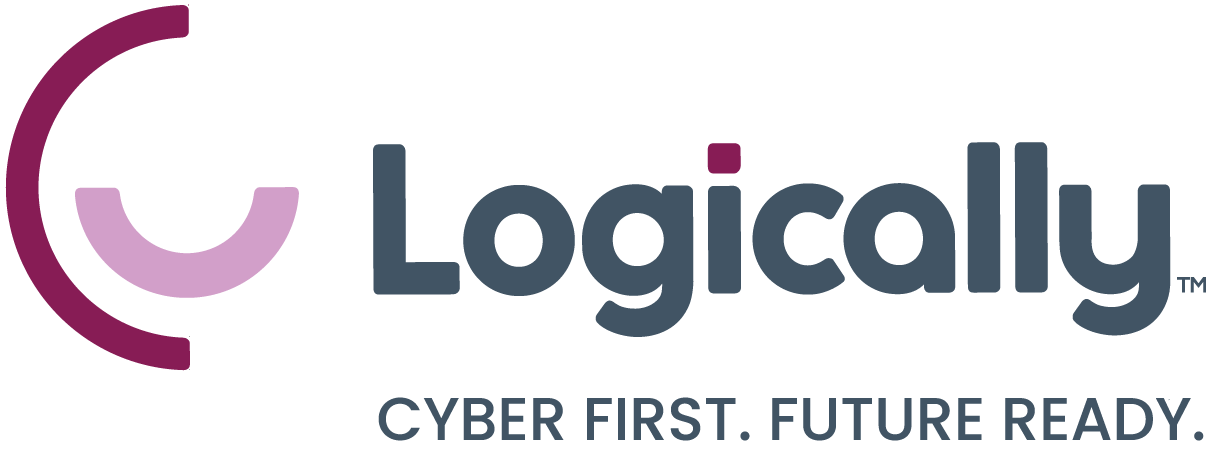![]()
Earlier this month, over 100 IT and security leaders gathered at the Renaissance Columbus Downtown Hotel in Columbus, Ohio, for LogicON 2025—a three-day deep dive into the realities of AI governance, IT modernization, and cybersecurity.
Designed by Logically for medium-sized organizations, the event wasn’t just another conference—it was a working session for leaders ready to separate AI hype from business reality. This year’s theme—AI-Driven Readiness: Adapting IT & Security for an AI-Powered Future—captured a defining shift in how mid-market organizations approach AI’s impact on security operations, IT management, and governance.
And midway through the conference, attendees witnessed a special announcement from CEO Joshua Skeens that signaled a bold new chapter for Logically and its partners—one that cements our position as a true NextGen Service Provider (NSP).
In the Era of AI
Rather than chasing the latest trend, LogicON 2025 focused on how IT and InfoSec leaders can integrate AI safely and strategically—building trust, compliance, and long-term business value.
From keynote panels to hands-on bootcamps, LogicON 2025 proved that responsible AI adoption isn’t about doing everything—it’s about doing the right things, securely and efficiently.
“The amount and variety of information that was provided during the conference was terrific. Much appreciated. My biggest problem at the moment is carving out the time to process it and determine priority next steps!”
— Conference attendee
Five Sessions That Defined LogicON 2025
1. Keynote: Change Smarter — Leading Through the Disruption of ChangeSpeaker: Tony Chatman
Tony Chatman’s keynote set the tone for the conference, calling on leaders to redefine how they navigate disruption. Rather than reacting to turbulence, Chatman urged organizations to lead deliberately through it—anchoring leadership in empathy, communication, and perspective. He revealed how the rate of change has skyrocketed, leaving many companies struggling to keep pace not because of poor strategy, but because of human resistance.
Through his “Change Smarter” framework, Chatman drew a sharp line between change and disruption—one being intentional and growth-oriented, the other unexpected and disorienting. He walked the audience through the emotional journey teams experience during transformation, showing that what leaders see as progress often feels like loss to those on the front lines. His message was clear: successful transformation isn’t about minimizing resistance; it’s about leading people through it.
Key takeaways: Chatman challenged IT and business leaders to communicate more than they think necessary, to focus their influence where it matters most—top leadership, middle managers, and opinion leaders—and to foster resilience as a skill, not a reaction. His closing insight resonated across the room: the future belongs to those who can turn uncertainty into alignment and disruption into momentum.
2. The AI Paradox — Innovation, Complexity & HypeSpeakers: Joshua Skeens and Jennifer Ives
In “The AI Paradox,” speakers Josh Skeens and Jennifer Ives tackled one of the most pressing challenges facing today’s IT and business leaders: separating AI’s promise from its pitfalls. They explored how hype cycles can distort priorities and why success depends less on algorithms and more on aligning AI initiatives with measurable business outcomes. The session revealed that 95% of organizations are now exploring AI in some capacity, yet many stumble due to vague objectives, fragmented data, or unrealistic vendor expectations.
Both leaders emphasized a pragmatic, value-driven approach to innovation. Instead of chasing flashiest tools, Skeens and Ives urged teams to focus on clarity, governance, and execution—anchoring investments to outcomes in efficiency, revenue, and risk reduction. Through their frameworks for evaluating readiness and scalability, they reframed AI not as a silver bullet but as a disciplined strategy for long-term business transformation.
3. Seeing Isn’t Believing: Deepfakes and the Erosion of Digital TrustSpeakers: Buddy Pitt and Jake Tarrant
In one of the most buzzed-about sessions of the conference, “Seeing Isn’t Believing: Deepfakes and the Erosion of Digital Trust,” Logically’s Buddy Pitt and Jake Tarrant demonstrated how quickly truth can blur in the age of generative AI. They unpacked how deepfake technology—once reserved for advanced research labs—has become so accessible that even a few minutes of source material can create convincing synthetic audio or video. The discussion spotlighted the real-world risks for IT and security teams: impersonation scams, financial fraud, and corporate espionage now fueled by AI-generated likenesses and voices.
To drive the point home, the crowd met AI-generated versions of MJ Patent, Josh Skeens, and Jeremy Williams—convincing digital doubles that underscored how easy it is to manipulate identity. The demonstration was both captivating and unsettling, illustrating how deepfakes can undermine trust across organizations. The presenters urged leaders to adopt new verification processes, foster a culture of skepticism, and invest in training to recognize synthetic media—because in today’s digital world, even the most familiar face may not be real.
4. Burnout, Balance & AI in the Human WorkflowSpeaker: Chris Cochran
In “Burnout, Balance & AI in the Human Workflow,” Chris Cochran brought a rare mix of candor and insight to one of the industry’s most pressing challenges: the human cost of constant innovation. He described today’s IT and security landscape as a “modern pressure cooker,” where relentless cyberattacks, warp-speed AI adoption, and shrinking teams collide to test resilience. Cochran reframed burnout as a systemic issue, not a personal failure—when organizational demands consistently outpace resources, even the strongest professionals falter. His message struck a chord with leaders balancing the promise of automation against the realities of human fatigue.
Cochran urged the audience to embrace AI as an ally, not an overlord. Through vivid examples, he showed how automation can relieve cognitive overload when applied thoughtfully—freeing teams from repetitive, low-value tasks to focus on creativity, problem-solving, and impact. His “Balance Framework” outlined a simple but powerful mandate: automate the drain, keep humans in the loop, and measure wellness alongside output. The result, he argued, is a healthier, more resilient organization—one where technology amplifies human potential rather than replacing it.
5. Privacy on the Edge: Protecting Data in an AI-Driven WorldSpeaker: Rachael Ormiston
In “Privacy on the Edge,” Rachael Ormiston, Chief Privacy and Trust Officer at Osano, reframed the AI privacy conversation around governance, not fear. Opening with a relatable metaphor—AI as a “brilliant but unsupervised intern”—she illustrated how even the smartest systems need structure, oversight, and clear boundaries. Ormiston mapped today’s escalating regulatory complexity, noting that 45 U.S. states considered AI bills in 2024 and that new privacy laws are multiplying worldwide. Her guidance was pragmatic: organizations can survive this wave of regulation by embedding privacy into the innovation process rather than bolting it on later.
She urged leaders to view privacy readiness as an active capability, not a compliance checkbox. Through practical frameworks like the NIST AI Risk Management Framework and EU AI Act, she outlined how to mature an AI-ready privacy program—one that anticipates risks such as personal data exposure, algorithmic bias, and consent fatigue before they become crises. The session closed with three immediate takeaways—map data in AI systems, draft a one-page AI use policy, and run a mini privacy impact assessment—underscoring that protecting data in an AI world starts with simple, repeatable action.
BONUS!! AI’s Ripple Effect Across the Org Chart
Speakers: Cara Parfitt, Whitney Hausmann, Christopher Hudson, Karl Noone
This session confronted one of the biggest paradoxes of AI adoption: the same tools designed to accelerate productivity can also quietly dilute it. The discussion traced how AI’s influence extends beyond IT—reshaping workflows, decision-making, and even organizational culture. Leaders explored how to align AI investments to measurable business outcomes while maintaining human judgment at the center of every process. The takeaway was clear: AI must enhance cognition, not outsource it.
Then came the moment that defined the conference lexicon: the introduction of the term “workslop.” Borrowed from a recent Stanford study, workslop describes “AI-generated work content that masquerades as good work, but lacks the substance to meaningfully advance a given task.” The audience immediately recognized it—the emails, reports, and meeting summaries that look productive but require others to clean up, reframe, or completely redo. The speaker unpacked how workslop creates a hidden drag on performance: employees spend nearly two hours per instance untangling AI’s half-baked outputs, costing mid-sized organizations millions annually in lost time and cognitive rework.
By the end of the session, workslop had become the buzzword of LogicON 2025—shorthand for what happens when AI leads the workflow instead of supporting it. The crowd’s reaction was equal parts laughter and relief: someone had finally named the invisible burden many teams feel. The conversation shifted from enthusiasm about automation to a more mature question—how do we design workflows that keep the human in the driver’s seat? As one attendee put it, “We can’t afford to automate ourselves into inefficiency.” The term stuck, spreading through breakouts and networking sessions as both a warning and a wake-up call: smart IT leadership doesn’t just adopt AI—it curates it.
All sessions were valuable and had a lot of information. Lots to think about and take back to the org.”
— Conference attendee
Special Announcement – Logically: Your NextGen Service Provider (NSP)
Tuesday afternoon marked one of the more exciting moments of LogicON 2025. During a highly anticipated afternoon keynote, CEO Joshua Skeens took the stage to unveil Logically’s evolution into a NextGen Service Provider (NSP)—introducing three major innovations designed to shape the future of secure and intelligent IT.
The announcement spotlighted:
- A new UpSkill Academy partnership that brings enterprise-grade AI and cybersecurity training directly to customers.
- The launch of MyShop, a 24/7 eCommerce portal simplifying IT procurement with real-time pricing and transparency.
- And a Managed AI Solution, built to bring security, governance, and control to enterprise AI adoption.
The room’s energy shifted instantly—partners, customers, and industry peers recognized that this announcement was more than a product launch; it was a statement of direction. Logically isn’t just managing technology—it’s redefining how organizations secure, enable, and scale it.
“AI shouldn’t be a security liability or a guessing game,” said Joshua Skeens, CEO of Logically. “Our Managed AI Solution helps organizations unlock innovation while maintaining the compliance and control they need to operate responsibly.”
This milestone firmly establishes Logically as a NextGen Service Provider—one uniting cybersecurity, cloud, and AI to deliver measurable business outcomes.
Read the Official Press Release: Logically Unveils Three New Innovations at LogicON 2025
Key Takeaways for IT and Security Leaders
LogicON 2025 was more than a conference; it was a blueprint for the future of mid-sized organizations. Across every discussion, five imperatives stood out:
- Embrace AI with discipline. Deploy with governance, transparency, and measurable outcomes.
- Simplify your stack. Tool consolidation drives cost control and better visibility.
- Prioritize data integrity. Good AI requires clean, governed, and protected data.
- Protect people as assets. Automation should empower—not exhaust—your workforce.
- Invest in community. Shared intelligence and collaboration accelerate resilience.
LogicON 2025 stands as a testament to what happens when the IT community comes together to share insight, innovation, and intent. Across every keynote, roundtable, and conversation, one theme held true: progress is most powerful when it’s practical, shared, and human-centered. From redefining leadership through change to balancing AI adoption with trust and well-being, the event reflected the strength of collaboration that defines our customers, partners, and teams. At Logically, we leave LogicON 2025 with renewed conviction that the future of AI isn’t built alone—it’s built together, one informed, connected, and forward-looking organization at a time.
Thank you to our Sponsors
At Logically, we know that innovation doesn’t happen in isolation—it thrives through collaboration. This year’s LogicON 2025 was a testament to that spirit, powered by the incredible support of 14 esteemed sponsors who helped bring the event to life. We were honored to partner with industry leaders, including SonicWall, Extreme Networks, Seceon, TD Synnex, SentinelOne, Microsoft, Kaseya, Cysurance, Osano, Huntress, Fortinet, Techchieva, Rewst, and GreatAmerica Financial. Together, we were able to fortify LogicON's prominence within the industry and create visibility for the latest innovations and offerings in IT and security.



.png?width=960&length=960&name=Top%205%20New%20Teams%20Features%20to%20Boost%20Productivity%20in%202025%20(6).png)